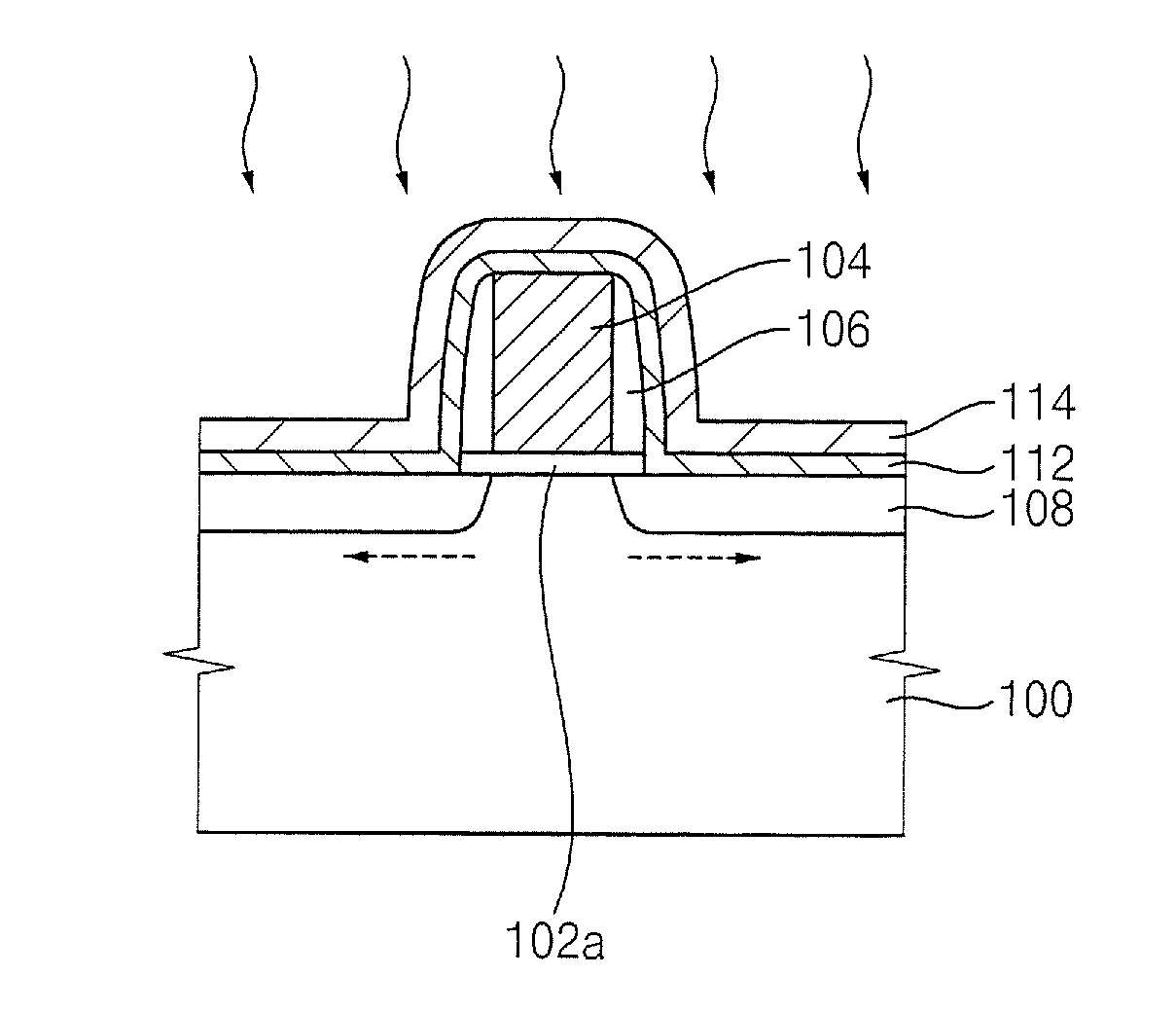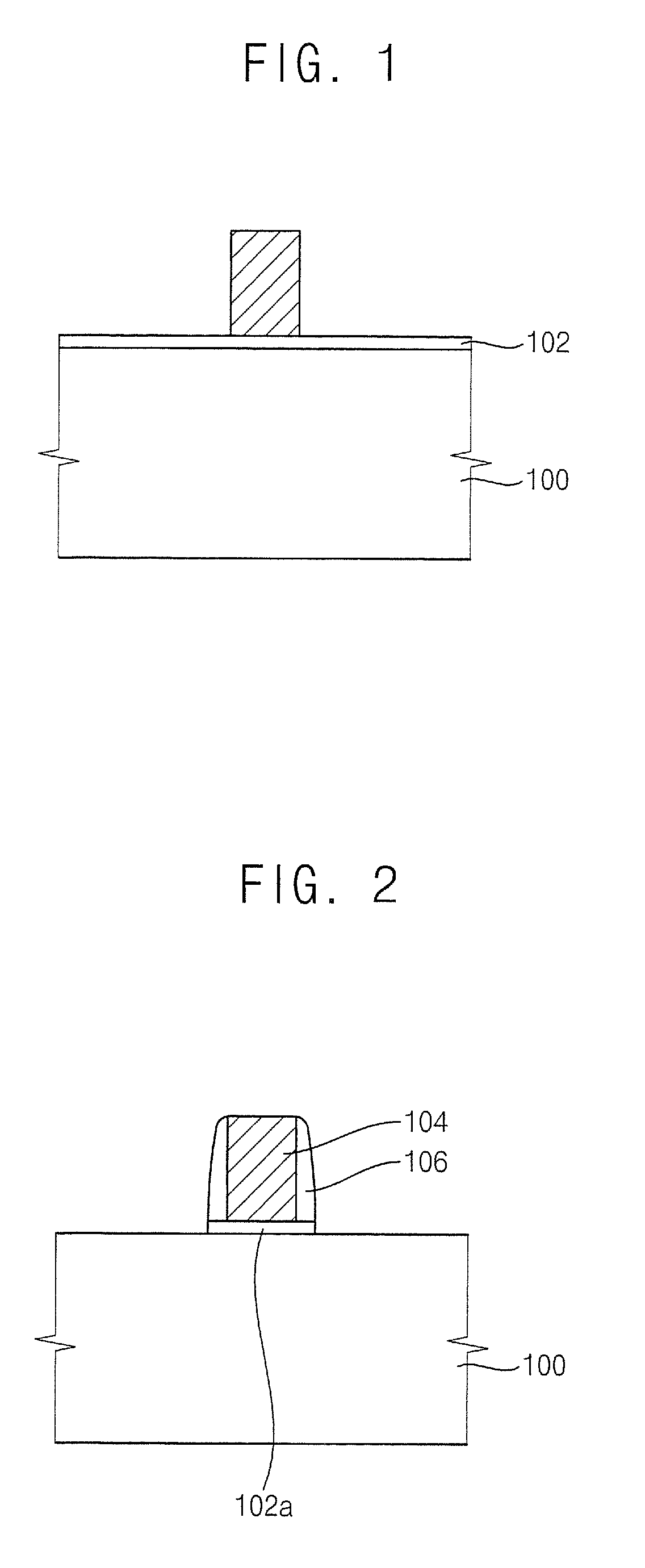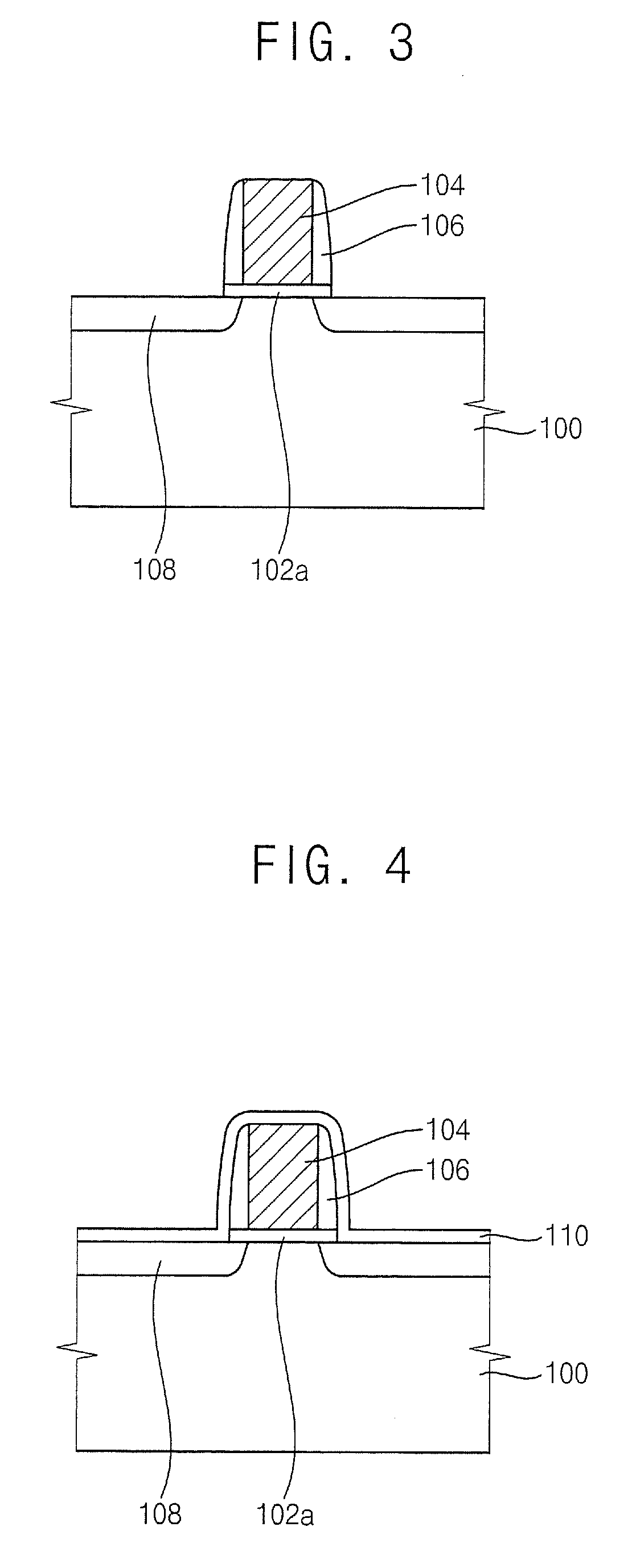Methods of manufacturing mos transistors with strained channel regions
- Summary
- Abstract
- Description
- Claims
- Application Information
AI Technical Summary
Benefits of technology
Problems solved by technology
Method used
Image
Examples
example 1
[0157]A CMOS transistor was manufactured by processes substantially the same as or substantially similar to those described with reference to FIGS. 8 to 17.
[0158]After a single crystalline silicon substrate having a crystalline structure of (1 0 0) was prepared, a gate insulation layer and a polysilicon layer were formed on the substrate. The polysilicon layer and the gate insulation layer were partially etched to form a first gate structure of an NMOS transistor and a second gate structure of a PMOS transistor on the substrate. Each of the first and the second gate structures had a length of about 0.5 μm to about 0.6 μm and a width of about 5 μm.
[0159]Spacers were formed on sidewalls of the first and the second gate structures, and then N type impurities such as P were implanted into first portions of the substrate adjacent to the first gate structure to form first source / drain regions at the first portions of the substrate. P type impurities such as B were implanted into second po...
example 2
[0160]A CMOS transistor was manufactured by processes substantially the same as or substantially similar to those described with reference to FIGS. 8 to 17.
[0161]A single crystalline silicon substrate having a crystalline structure of (1 0 0) was provided, and then a gate insulation layer and a polysilicon layer were formed on the substrate. The polysilicon layer and the gate insulation layer were partially etched to form a first gate structure of an NMOS transistor and a second gate structure of a PMOS transistor on the substrate. The first and the second gate structures had lengths of about 0.5 to about 0.6 μm and widths of about 5 μm, respectively.
[0162]Spacers were formed on the sidewalls of the first and the second gate structure. N type impurities were implanted into first portions of the substrate adjacent to the first gate structure to form first source / drain regions. P type impurities were implanted into second portions of the substrate adjacent to the second gate structure...
PUM
 Login to View More
Login to View More Abstract
Description
Claims
Application Information
 Login to View More
Login to View More - R&D
- Intellectual Property
- Life Sciences
- Materials
- Tech Scout
- Unparalleled Data Quality
- Higher Quality Content
- 60% Fewer Hallucinations
Browse by: Latest US Patents, China's latest patents, Technical Efficacy Thesaurus, Application Domain, Technology Topic, Popular Technical Reports.
© 2025 PatSnap. All rights reserved.Legal|Privacy policy|Modern Slavery Act Transparency Statement|Sitemap|About US| Contact US: help@patsnap.com



